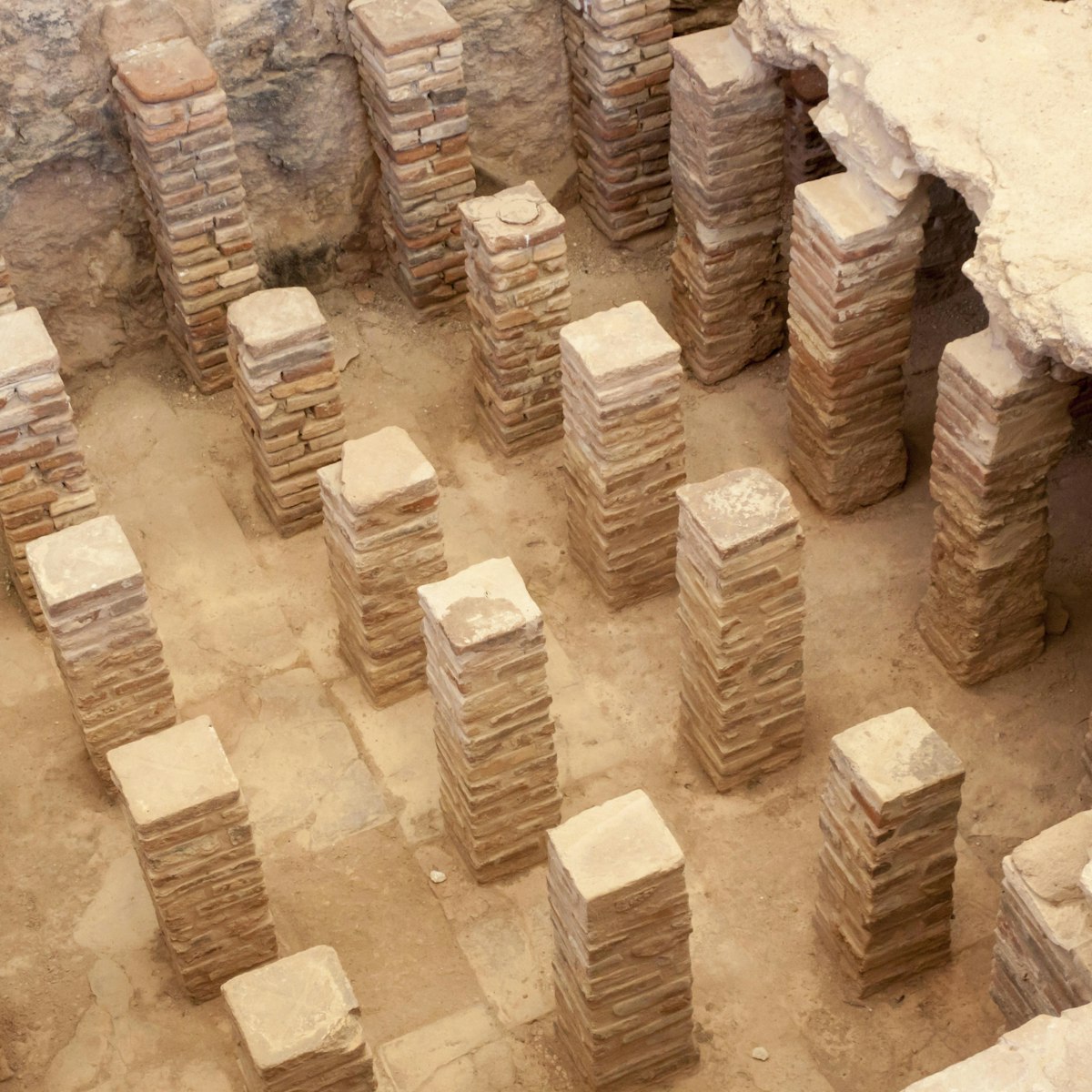This Unesco-listed site is a complex of three churches in one, dating from the 11th century and built over 400 years. Now under one huge pitched wooden roof, they represent some of the region's most wonderfully preserved churches. The monastery also houses an icon-filled Byzantine Museum.
Get there by following the narrow, winding main street to the opposite side of the valley. Opening hours can fluctuate; you can generally find the priest (plus key) at the nearby coffee shop.
The main domed Orthodox church exhibits colourful, intricate 13th-century frescos dedicated to Agios Irakleidios. These include depictions of Jesus’ entry to Jerusalem on a donkey, with children climbing date trees to get a better look. Other frescos include the Raising of Lazarus, the Crucifixion and the Ascension, with vivid colour schemes suggesting artistic influence from Constantinople.
The antechamber and Latin chapel have more frescos, dating from the 15th and 16th centuries. Those in the chapel are considered the most comprehensive series of Italo-Byzantine frescos in Cyprus. The scenes representing the Akathistos hymn (praising the Virgin Mary in 24 verses) are shown as 24 pictures, each carrying a letter of the Greek alphabet. The Arrival of the Magi depicts the Magi on horseback, wearing crusader armour and grandstanding red crescents (a Roman symbol for the Byzantines and later the Turks). Photographs of the iconography are not permitted.
The original Orthodox church has a double nave, to which a narthex and Latin chapel were later added.
The monastery's Byzantine Museum displays a collection of 15 icons discovered in 1998. Dating from the 16th century, the icons were hidden underground for many years by Orthodox priests escaping the invading Ottomans. The iconostasis is covered in carvings of local ferns found at the river in Kalopanayiotis, confirming its origins.








